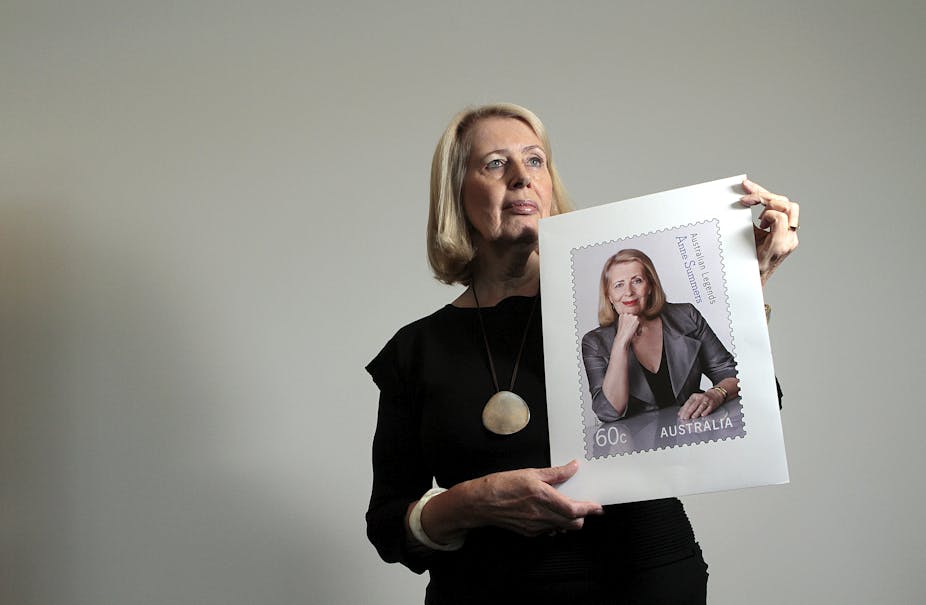When Prime Minister Julia Gillard spoke out against sexism and misogyny in the parliament last month, her words had resonance far beyond the political context of the moment.
It was a reminder that women suffer injustices, and too often silently. In Australia, those injustices are often seen as first world problems that are political and economic, and less commonly, life threatening.
This is not always true, and it certainly was not true in the 1960s. While this revolutionary decade saw the advancement of some women’s rights, it remained a dangerous time for women. Simple acts like engaging in sex could cost a woman her life. But, out of shame, these deaths were kept out of view. No Australian drama captures this better than the ABC’s Dangerous Remedy, which airs on the public broadcaster on Sunday night.
It is a telemovie about power, corruption and abortion, and the grave toll it has taken on women. It has caught my attention for several reasons. It brutally shows the trajectory that Australian women have travelled in the quest for equality. It is a story that touches on the heart of my research about what meaningful print investigative journalism can achieve in society, and it is poignant, local story-telling.
Set in Melbourne, the opening scene is of a young, single woman waiting haplessly for a car to arrive to take her to an unknown destination. She is trusting that they, whoever they are, will fix her most intimate problem, an unwanted pregnancy. She waits nervously on the roadside in a socio-political climate that renders her a social pariah if her secret were disclosed; and if not, as a law-breaker in her efforts to rid herself of a physical, economic and social burden.
What happens next is something worse than either of these dilemmas. She is bundled into a car, blindfolded and taken to a dirty, makeshift infirmary. Perhaps more confronting for the audience is that this might be dramatised, but it is not fiction.
Someone who knows its reality is Dr Anne Summers, an author and journalist, and former Keating government advisor heading the Office of the Status of Women. After watching a preview copy she wrote to her Facebook followers of her own experience with backyard abortion:
I am so glad the story of this awful era is finally being told. I had the same experience as the girl in the opening scene, being butchered by a backyard operator in Melbourne in the 1960s, being blindfolded before being driven to the suburban house where the abortion was performed. The only difference was that I did not die, because I was lucky enough to get professional medical help in time.
It is incredible to think that it is only 40 years since the Victoria police controlled abortion in that state (the same happened in NSW) and desperate women, especially those who did not have the money for the qualified doctors operating out of private hospitals, risked their lives to end unwanted pregnancies.
Unfortunately, Summers’ story is not unique. Researchers suggest as many as one in four Australian women have experienced abortion. And, because of the efforts of “Dangerous Remedies” protagonist Dr Bertram Wainer, women’s experiences in Victoria are now legal and no longer involve the horror of makeshift clinics.
Today, women’s experiences of pregnancy termination are safer, but are they less traumatic? I don’t know. I do know from reading the scores of responses to Summers’ on Facebook that there is still a social stigma attached.
I also know that when I was a nurse, I emotionally supported friends, and more than once walked with them past protestors outside a termination clinic. It was threatening and intimidating. Abortion is a difficult decision without the pressure of strangers, some whose intentions are malevolent. In 2001, Steven Rogers lost his life working as a security guard protecting women entering such clinics.
In the 1960s, Wainer was a courageous man who raised allegations of a police protection racket involving a group of Victorian abortionists. For a fee, police would not pursue doctors and backyard abortionists who performed illegal abortions.
The media also played an important role during this time. My research about investigative journalism introduced me to the work of journalist Evan Whitton. He is barely mentioned in the telemovie, but he is also a courageous fellow, who demonstrated what investigative journalism could do well: holding those with power to account.
Whitton seized on Wainer’s allegation, publishing details of six sworn affidavits alleging police extortion in Melbourne’s Truth newspaper, in a story called “The Ugly Cloud”. The revelations led to a government board of inquiry chaired by Melbourne silk Bill Kaye. Jack Ford, Jack Matthews and Martin Jacobson of the homicide squad were jailed. Wainer’s dedicated campaign led to law reform, and Whitton earned his second of five Walkley awards exposing the injustices.
Researching this story, Whitton told me: “The task was made easier by the failure of other organs of the media to turn up during Dr Wainer’s campaign to show that bad laws made bad cops”, he said. “Police roundsmen tend to be prisoners of the source. I suspect editors made the error of believing them when they said Dr Wainer was mad and bad and there was nothing in the police corruption story”.
How wrong they were.

